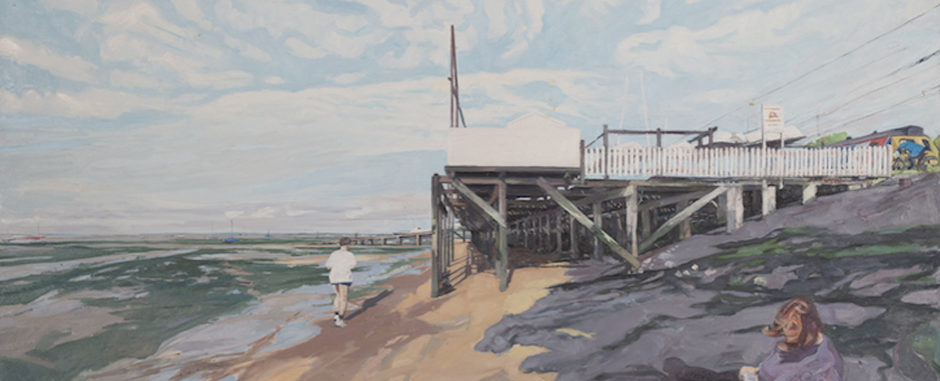The salubrious health and diversity of painting in Britain today is hard to underestimate. Make no mistake we are living in a golden era in which, some might say, painting is King!
The new Hayward UK Touring exhibition, Slow Painting has been a welcome inspiration for this iteration of our blog. Its catalogue is very nice indeed and is proving to be particularly popular. To compliment this we’ve picked out some of the best recent monographs on painters working in Britain today (from seven of our lovely publishers), accompanied by words of notable endorsement.
Slow Painting (Hayward Publishing)
“There is something elemental in the act of painting that distinguishes it from the excess of images produced and consumed in contemporary life. Painting is an old, slow art, and this major exhibition explores its enduring vitality and presence, surveying a range of contemporary paintings that take their time and invite us, as viewers, to do the same. We are delighted to be presenting this exhibition with a range of wonderful exhibition partners around the UK.” — Brian Cass, Senior Curator, Hayward Gallery
Lubaina Himid: Workshop Manual (Koenig Books / Modern Art Oxford)
“It would be impossible to not acknowledge Himid’s increased scope in the art world consequent to her winning the Turner Prize last year. As the artist explains, her victory has been the principal stimulus in getting people to listen, as well as initiating a sharp rise in collaborative work with other black female artists or those residing in her native North West England.” — Rosie Minney, Corridor8
Michael Simpson: Paintings and Drawings 1989–2019 (Blain|Southern)
“He fuses a suitably Renaissance concern with how to depict three dimensions on two […] He also combines the seriality, clarity and geometry of minimalism with detailed surface effects that engage with abstract expressionism.” — Paul Carey-Kent, Frieze
Claudette Johnson: I Came to Dance (Modern Art Oxford)
“Johnson’s subjects, by turns defiant and wary, funny and challenging, represent the varieties of stories that can be told by, in the artist’s words, ‘Blackwoman presence […] Her art encapsulates all this in the tenderness and wilfulness of the individual human form.” — Jillian Caddell, Apollo Magazine
John Wonnacott: The Estuary (Focal Point Gallery)
“His style combines the craggy naturalism of a Lucien Freud with something more poetic, a kind of keening for a time long since lost that comes through in the just-about-there washes that make up his big open skies and gauzy seas which give his canvasses a peculiar sense of end-of-a-lovely-day-out-in-the-summer-holidays sensation of contended sleepiness.” — Josh Baines, It’s Nice That
Nick Goss: Morley’s Mirror (Koenig Books)
“In subject and style, these works are infused with a sense of displacement and impermanence […] In a contemporary age troubled by crises of migration and the looming threat of climate change, these works have struck a chord.” — Maggie Gray, Apollo Magazine
Chantal Joffe: The Front of My Face (Victoria Miro)
“The clue, I think, is what it’s like to look at these faces communally, as a chorus. They are so wildly specific, peering at you sideways, each one differently unhappy, each one concrete, present, original as in not a copy of the last.” — Olivia Laing, The Paris Review
John Virtue (Ridinghouse)
“You see John Virtue himself, in the act of painting, the work a permanent present participle of storming creativity […] the more you look, the more you see the paint in a state of turbulent self-animation: dripping and drizzling, stabbing and dabbing, like a feverish sorcerer’s apprentice.” — Simon Schama, The Guardian
So as you can see, painting from Britain is indeed in rude health! Long may it continue…
Image credit: John Wonnacott, Estuary, Sailing Club, Boat-rack (detail). From the book, John Wonnacott: The Estuary, 2019.


